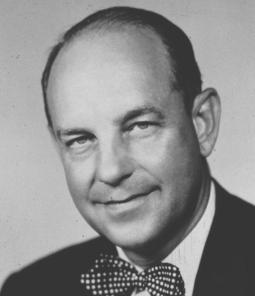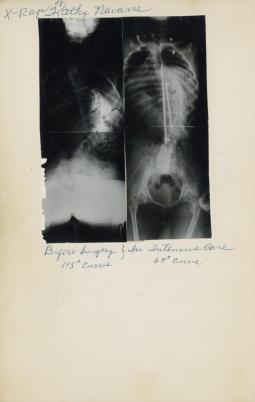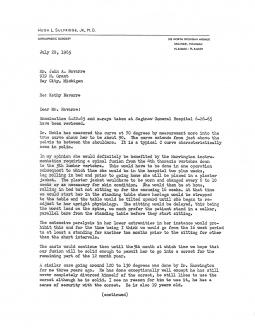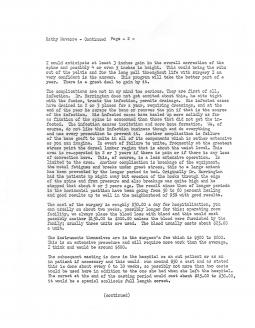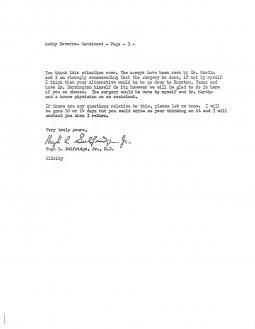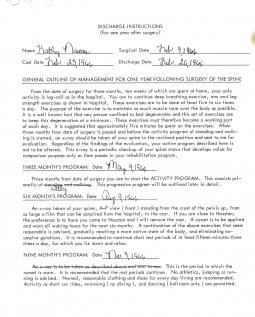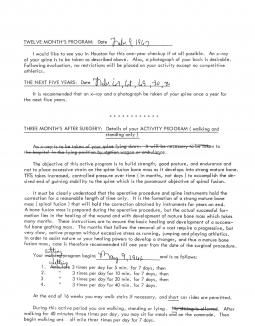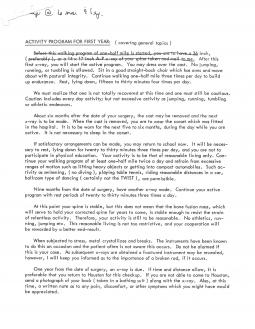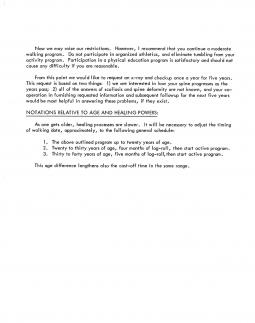Polio Place
A service of Post-Polio Health International
Paul Randall Harrington, MD
Born: September 27, 1911
Died: November 29, 1980
Major Contribution:
Paul Randall Harrington was an American orthopedic surgeon best known as the designer of the Harrington Rod, an internal device for the straightening and immobilization of the spine. It entered common use in the early 1960s and remained the gold standard for scoliosis surgery until the late 1990s.
The poliomyelitis epidemics of the post-war years increased the numbers of scoliosis dramatically. He recognized that early treatments for scoliosis, which relied heavily on physical therapy, were inappropriate for patients paralyzed by polio. Developing a new treatment became Dr. Harrington’s main priority.
Up to one million people had Harrington rods implanted for scoliosis between the early 1960s and the late 1990s until it was phased out.
Other Information:
Brief Biography: Dr. Harrington was educated in the Kansas City school system, and in 1930, was named one of the State of Kansas' 15 most outstanding high-school graduates. He accepted a basketball scholarship from the University of Kansas, and the team won the Big Six championship three years in a row. In his senior year, he was elected captain of the team. His interest in sports led to an interest in medicine.
He graduated from the University of Kansas School of Medicine in 1939, having worked his way through school playing semi-professional basketball, and won the championship of his region in the javelin while trying to join the 1936 Olympic team.
After completing his orthopedic surgical residency in 1942, he joined the United States Army. During World War II, he served as chief of the orthopedic service at the 77th Evacuation Hospital and saw service in Europe and Africa.
Following the war, Harrington worked as a surgeon at Jefferson Davis County Hospital in Houston, Texas. The approach for scoliotic polio patients was manual correction at the time of surgery with internal fixation of each facet of the spine. Harrington found that the fixation would not hold because the hooks and threaded rods would corrode and break, causing curvature to return.
During the late 1940s to late 1950s, Harrington worked on an improved surgical procedure of spine instrumentation to correct and stabilize curved spines. Once Harrington was satisfied with the basic design, he arranged for extensive testing of the instruments at the Engineering Department at Rice University in Houston, Texas, and at a commercial testing company in Chicago, Illinois. The device would eventually become known as the Harrington implant, or Harrington Rod.
In 1960, Time reported, "Some ailments seem almost preferable to their cures. A case in point is scoliosis, an abnormal curvature of the spine that occurs in childhood. [The] treatment seems so punishing that [parents] cannot be persuaded to permit it even to save their children from permanent deformity. Last week Houston surgeon Paul Harrington, MD, was winning converts to a new and happier method."
The February 1963 publication of Pediatrics Clinics of North America included "Scoliosis in the Growing Spine" by Harrington.
In 1978, he moved to The Institute of Rehabilitation and Research, now called TIRR Memorial Hermann (Houston). The hospital attracted polio patients from across the country and at one time, managed more than 10 percent of the new cases of polio that occurred annually.
He was one of the founding members of the Scoliosis Research Society, serving as president from 1972 to 1973. He was orthopedic consultant to the United States Air Force and the United States Army in San Antonio, Texas, and traveled extensively to demonstrate his surgical technique. For eleven consecutive years, he gave an instructional course on the treatment of scoliosis at the annual American Academy of Orthopedic Surgeons meetings. He also received the Nicolas Andry Award from the Association of Bone and Joint Surgeons in 1973. He received the Most Distinguished Alumnus Award from the Medical Alumni Association at the University of Kansas in 1975.
He received the Cora and Webb Mading Medal from the Texas Institute for Rehabilitation and Research (its name at that time) and Baylor College of Medicine in 1973.
The Harrington Rod is no longer used today because of advances in surgical techniques and technology that straightened spines using segmental, instrumentation systems with multiple hooks, wires and pedicle screws. This procedure enables surgeons to maintain the normal sagittal contours of the spine avoiding "flatback syndrome" that sometimes developed with the Harrington Rod.
Nevertheless, he is still remembered in Texas today. Baylor College of Medicine awards the Paul Harrington Award for Excellence to outstanding physicians in orthopedic research.
Location of Papers:
University of Kansas Medical Centre, “The Harrington Archives.”
Description of Papers: The archives contain Harrington’s professional papers, photographs, publications, manuscripts, blueprints, drawings and examples of the Harrington Rod. Also included are biographies, presentations, professional and personal correspondence files, videotapes, movies. Display cases exhibit photographs, documents and artifacts that depict the history of Harrington’s life and career.
In 1992, Harrington's writings were collected by Nancy J. Hulston and Marc A. Asher in The Collected Writings of Paul Randall Harrington, MD, published by Lowell Press.
April 2012/Carol K. Elliott and Joan L. Headley
